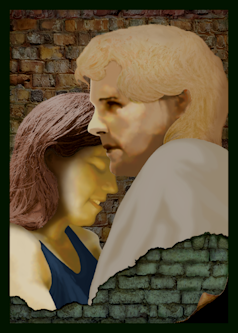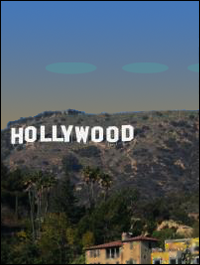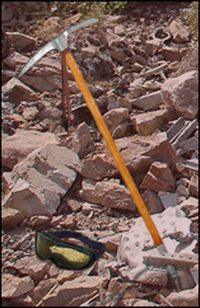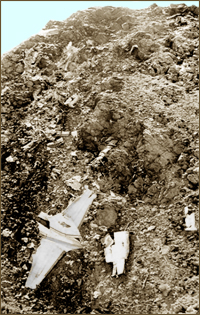Imagine you and I are having a conversation and it occurs to you that what I’m saying does not seem entirely genuine. Perhaps you find yourself wondering, “What does he really think?” And if you asked, I’d probably try to come clean, but I think that even if I threw myself into the task with abandon and total sincerity whatever I said would be as vapor rising from a vast ocean swarming with life below the surface of consciousness. Strictly speaking, I think I’d only be able to say what I think I think. In other words, I think that much of what I’m thinking at any given time is a feeble work in progress emerging in response to immediate conscious circumstances profoundly influenced by a tumultuous underlying universe of unconscious material.
In the movies we often see a whiteboard to which photos of bad folks have been taped, and lines drawn on the board between the photos indicate who is related to who. And sometimes in the movies we also see a basement or attic or garage where a loner has covered the walls, and perhaps even the floor and ceiling, with photos, news clippings and scribbled notes, connected by a dense web of threads that tie together pieces of an improbable conspiracy. I think both the detective’s careful plotting and the loner’s largely incomprehensible web are different flavors of metaphor for the way the human mind connects mental material, only the web of interconnecting threads within any individual’s mind is millions of times denser, with literally every scrap of mental material connected through millions of hops to every other scrap.
I think a detective’s whiteboard is especially metaphoric of the mental activity of someone who has developed the ability to willfully ignore connections that don’t seem pertinent to whatever conscious task is at hand…especially tasks that involve teamwork and require agreement among the participants regarding the basic details of their shared perceived world and what’s to be accomplished and how.
And then there is the poor devil, often characterized as “a conspiracy nut”, whose ability to ignore mental connections is somewhat limited. For such folks, I think, no matter what is being considered, connections are included to various clusters of mental material that have acquired a sort of gravitational pull. And that pull grows stronger each time it is indulged, which is often. In extreme cases I think even when “a conspiracy nut” is discussing the price of tomatoes their words and actions are leavened with ideas about pyramidal structures on the surface of Mars or the suppression of reports of Big Foot sightings.
I will cop to a certain amount of conspiracy nuttiness since it seems to me my understanding of myself and my relations with everything I’m consciously aware of drifts on a sea of unconscious material, every iota of which is connected to every other iota. Most of the time, like a detective earnestly working a case with like-minded colleagues, I willfully ignore all but a relatively few connections. And those most frequently favored connections find expression in habits of behavior that others perceive as my personality. But at other times, like while working on the image above, I think webs of connections usually ignored find overt expression, in this case through arrangements of pixels that I was moved to set in place to a significant degree under the influence of lots of unconscious stuff.




